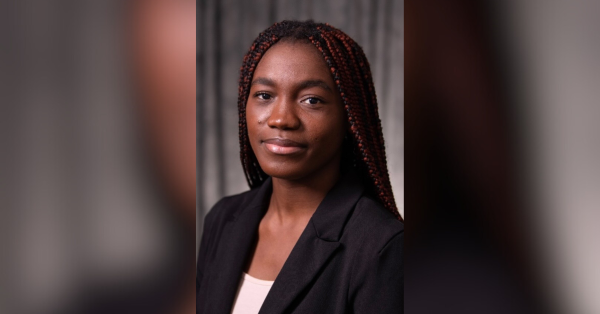Safe to drink?
Allegations of corrosive, discolored water surface in Chatham
February 28, 2016
Updated on Feb. 29 at 6:27 p.m.
An approximately 6-mile drive is what separates the village of Chatham from the UIS campus. However, 6 miles is not enough distance to separate some individuals within the UIS community from an allegedly dangerous water source.
While several UIS faculty members and students live in Chatham, the campus itself is supplied by a separate water source than the village.
On Feb. 23, the Chatham Water Quality Interest Group started a petition on www.change.org calling upon Illinois officials, including Gov. Bruce Rauner, to intervene in Chatham to make improvements to what they allege to be corrosive water.
The petition states “The corrosive water has damaged faucets, sinks, tubs, spouts, shower heads, hot water heaters, hoses, pipes and other items where the water sits for any period of time. In addition, we believe the chemical feeds and proprietary blend is causing an increase in health issues such as hair loss, rashes and skin issues resembling chemical burns.”
The petition further states “We request aggressive legal action be pursued against any individual or group who failed to protect the Village of Chatham from this water supply causing damage to our health and homes. We also request immediate action be taken to rid of this water supply so we can restore the value of our assets and prevent any further damage to the health of ourselves and our families.”
Since its creation on Feb. 23, the petition has gained 419 supporters as of today.
Mark Clayton, a Chatham trustee, acknowledged he is not a water expert, however he believes there is a problem with the water in the village of Chatham.
“I can say that since I was elected in 2013 [there’s] been an abundance of complaints about water quality from our systems… from the information that I’ve been shared, it does seem that we have corrosive water,” Clayton said.
Clayton stated that the problem with water began to occur in Chatham after the village switched from using water from Springfield’s City Water Light and Power (CWLP) to water from the newly formed South Sangamon Water Commission (SSWC).
The switch occurred after the Chatham Village Board voted in March 2010 to build a water plant near Rochester that would utilize water from the Sangamon River aquifer. The water is transported over a stretch of 15 miles in underground pipes from Rochester to Chatham’s water tower.
“In May of 2012 when we switched to the South Sangamon Water Commission … that’s when all the problems started,” Clayton said.
The SSWC states on their website that “The Commission was created to provide a stable, dependable and quality source of potable water to the Villages of Chatham and New Berlin.”
Clayton believes the village switched to the SSWC due to a boundary line dispute between CWLP and Chatham, as well as a focus on future growth.
“I’ve heard from this administration that the switch was in order to control our own destiny,” Clayton said.
In a March 2010 article with The State Journal-Register, Chatham Village President indicated much thought went into the decision to switch water sources.
“This board put a lot of time and effort, brought in a lot of experts and talked to a lot of people. They didn’t rush into a decision by any stretch of the imagination. They did their homework and they looked at all the options and felt like this was the best thing for Chatham today and into the future,” Gray said.
Area manager, Mark Thomas, at Woodard and Curan – an engineering firm based in St. Charles, MO that works in conjunction with the SSWC – said that the water quality in Chatham meets Illinois EPA standards.
“As we have gone back and reviewed the water quality that’s been discharged from the South Sangamon Water Commission, it has consistently met IEPA standards that are required for that plant to meet,” Thomas said.
Thomas further said that tests have been conducted to monitor the corrosiveness of the water, however he indicated the tests registered within the normal range. Additionally, Thomas stated the number of water complaints in the village has dropped.
Although the construction of the SSWC initially was expected to cost approximately $10 million, according to Clayton it has now cost $33 million and a total of $55 million if considering interest.
Despite the high price tag, Clayton stated the SSWC in the future will be spending an “additional millions of dollars to combat some of the water quality problems.”
To Clayton, the additional money the SSWC plans to spend on improvements is proof that a problem does exist with the water quality in Chatham.
“For the reasoning that the SSWC is wanting to spend an ‘x’ amount of millions of dollars to fix a problem, then a problem must exist,” Clayton said.
Josh Lawson, a UIS senior majoring in legal studies and the president of SGA, lives in Chatham and acknowledged the village’s poor quality of water.
“The water is absolutely disgusting,” Lawson said.
Lawson said that he and his family only consume bottled water, however they still have to utilize water with what he calls “a milky white color” when showering.
Despite hearing from other Chatham residents who believe they have had negative skin reactions to the water, Lawson has so far noticed no adverse effects.
Both Lawson and Clayton believe change should occur to better the water in Chatham.
Clayton has proposed considering the possibility of going back to using CWLP water.
“I think we should definitely explore that option. I proposed that option because if you look at this as a long-term situation, with poor water quality, we don’t know if that will ever be [remedied],” Clayton said.
Lawson agrees with Clayton’s proposal to explore the option of utilizing CWLP water again.
“They should go back to using CWLP for their water. During the days of CWLP providing Chatham’s water, there were no issues,” Lawson said.














